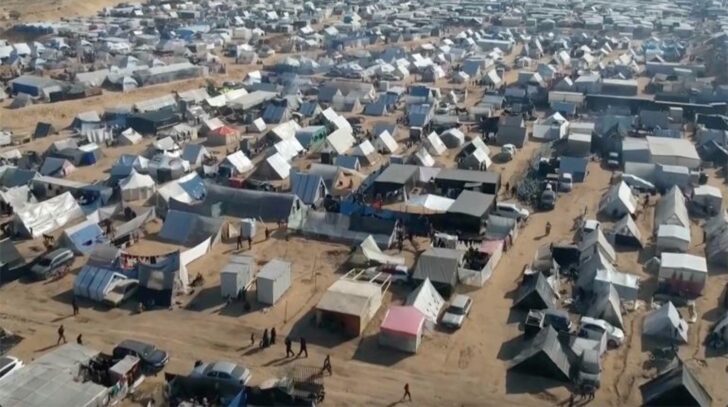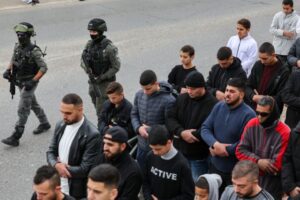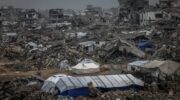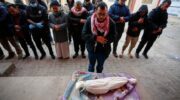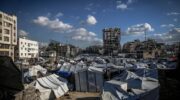Blinken avoids congressional oversight in weapon sale to Israel; Israeli military targets UN humanitarian aid convoy, historical sites, steals from Gazan homes; Gazan food insecurity is “catastrophic”; Israeli envoy threatens Lebanon; Gaza medical workers tortured, journalist killed; multiple incidents in West Bank; Friday worship disrupted in Jerusalem
The Guardian: Biden administration again bypasses Congress for weapons sale to Israel. Antony Blinken tells Congress he made second emergency determination covering $147.5m sale for equipment, “Given the urgency of Israel’s defensive needs.”
Blinken made a similar decision on 9 December, to approve the sale to Israel of nearly 14,000 rounds of tank ammunition worth more than $106m.
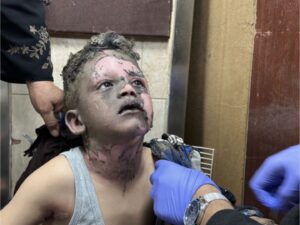
‘This is what the future wants’: Countdown2Ceasefire campaign urges young people to call for ceasefire on New Years Eve: Speaking to Al Jazeera, Bushra Mohammad, a spokesman for the Countdown2Ceasefire campaign, said, “This will be the largest call for a ceasefire, and it will be livestreamed throughout the night at every hour to show the global call for a ceasefire…Because this is what the future wants. We want a ceasefire, a permanent and an immediate one, because the suffering has gone on for far too long.”
Philippe Lazzarini, the head of the UN’s Palestine relief agency (UNRWA), has slammed Israeli forces for firing at an aid convoy as it returned from northern Gaza. Earlier, a UNRWA official said that the aid convoy came under fire as it travelled along a route designated by the Israeli army. In a post on X, Lazzarini said “shooting” and “other attacks” on aid workers and convoys obstruct “lifesaving” operations in the strip. The agency “coordinates all its movements with the Israeli Authorities”, he added.
Israeli President Isaac Herzog has blamed the United Nations for the small amount of humanitarian aid reaching Gaza, alleging that more aid could get in “if the U.N., instead of complaining all day, would do its job.”
Martin Griffiths, Under-Secretary-General for Humanitarian Affairs and Emergency Relief Coordinator, tweeted, “You think getting aid into Gaza is easy? Think again.” Griffiths listed 14 obstructions to getting humanitarian relief into the enclave, including: constant bombardments and aid convoys coming under fire; three layers of inspections before an aid truck can enter the Palestinian territory; a constant list of rejected items; and aid workers themselves being killed and displaced by the war.
RECOMMENDED READING: Beyond Maghazi: What controversial weapons has Israel used in Gaza war?
The Famine Review Committee (FRC), activated due to evidence surpassing the acute food insecurity Phase 5 (Catastrophic threshold) in the Gaza Strip, warns that the risk of famine increases daily amid intense conflict and restricted humanitarian access.
The committee added that, to eliminate the famine risk, it is imperative to halt the deterioration of health, nutrition, food security, and mortality situation through the restoration of health, water, sanitation, and hygiene (WASH) services. In addition, FRC call for the cessation of hostilities and the restoration of humanitarian space for delivering multisectoral assistance are vital first steps to eliminate any risk of famine.
United Nations Office for the Coordination of Humanitarian Affairs reports:’
- UN Secretary General, António Guterres, stated that as “hostilities in Gaza intensify, I remain gravely concerned about further spillover of this conflict, which could have devastating consequences for the entire region. I reiterate my call for an immediate humanitarian ceasefire and release of all hostages.”
- At least 100,000 internally displaced persons (IDPs) have arrived in Rafah, the most southernly city in Gaza in recent days, following the intensification of hostilities in Khan Younis and Deir al Balah, and the Israeli army’s evacuation orders. Already on 20 December, Rafah was estimated to be the most densely populated area in Gaza, exceeding 12,000 people per square kilometre. The new influx of IDPs has further exacerbated conditions related to the already overcrowded space and limited resources.
- The spread of diseases in Gaza has reportedly intensified, particularly due to the recent mass displacements across the south of Gaza. Some families have been forced to move multiple times. This situation adds strain to an already overwhelmed health system, which is struggling to meet the immense needs of the population. On 29 December, the head of the World Health Organization (WHO) in the occupied Palestinian territory announced that people living in shelters in Gaza have continued to fall ill. Close to 180,000 people are suffering from upper respiratory infections; there are 136,400 cases of diarrhea (half of these among children under five years old); 55,400 cases of lice and scabies; 5,330 cases of chickenpox; 42,700 cases of skin rash (including 4,722 cases of impetigo); 4,683 cases of Acute Jaundice Syndrome; and 126 cases of meningitis.
- the Director of UNRWA’s Gaza Field Office announced that Israeli forces had fired at an aid convoy that was returning from northern Gaza and had been taking a route which was designated by the Israeli army. While no one was injured, one vehicle sustained damage. The UNRWA director reiterated that aid workers should never be a target.
- Two recent reports have highlighted the deteriorating humanitarian situation in the West Bank. UNICEF’s Regional Director for the Middle East and North Africa observed that “this year has been the deadliest year on record for children in the West Bank, including East Jerusalem, with conflict-related violence reaching unprecedented levels.”
Speaking to the UN Security Council, Gilad Erdan has declared that the attacks from Lebanese territory on Israel are flagrant violations of Israel’s sovereignty, international law, and security council resolutions, and must stop. “Israel will defend itself. I have warned this council countless times,” he continued.
Notably, the Security Council has criticized Israel for the same types of actions. For example, the UNSC repeatedly condemned Israeli attacks on Lebanon between 1978 and 1982, but Israel disregarded the resolutions; human rights groups regularly document and report on Israel’s violation of international law; during the early weeks of the current escalation, organizations were already detailing breaches of international law, but Israel has not changed its strategies in order to comply.
RECOMMENDED READING: Is the United Nations anti-Israel? – a survey of UN resolutions
Gov’t media office reveals that more than 200 heritage sites have been targeted in Gaza, including mosques, churches, schools, museums and ancient archaeological houses, some of them dating back to the Phoenician area. The office says that 200 of the 325 heritage and archeological sites in the Gaza Strip have been targeted and destroyed by Israeli army attacks.
The office called the targeting of the sites “a failed attempt to obliterate the Palestinian cultural and heritage presence and an attempt to conceal Historical evidence and the depth of Palestinian history in the Gaza Strip,” and deemed their destruction a violation of international law.
Healthcare Workers Watch-Palestine says it has collected the testimony of 10 medical workers who have recounted being “tortured” after being detained by Israel. Gaza’s Ministry of Health has said 99 Palestinian healthcare workers from the enclave remain in detention. More detail is in the video below:
Our investigation in collaboration with @GazaMedicVoices and @ajplus found that more than 110 Palestinian healthcare workers were abducted by IOF. We have received a number of horrific testimonies of torture from those released.#NotATarget #Palestine #GazaGenocide #Gaza https://t.co/VklyyAGQvc
— Healthcare Workers Watch – Palestine (@HCWWatch) December 19, 2023
Testimony of Mohammed Salah, a paramedic at the PRCS ambulance center 🚑 in #Jabalia about the beating and humiliation he and his colleagues endured during their arrest by the Israeli forces after the invasion of the #Jabalia ambulance center in northern #Gaza a week ago.
🚨The… pic.twitter.com/Hi9K192WzY— PRCS (@PalestineRCS) December 29, 2023
Another journalist killed in Gaza: Al-Quds TV reporter was killed along with his family in an Israeli air strike on his home in Nuseirat in central Gaza. He was identified as Jabr Abu Hadros. The office said that 106 journalists have been killed since the beginning of Israel’s war on Gaza.
Al Jazeera reports that two of its journalists have been assaulted by Israeli soldiers in the Israeli-occupied West Bank near Dura, in the Hebron region. The news network says that correspondent Montaser Nassar and a photographer accompanying him were attacked, writing:
The soldiers severely beat the men and confiscated all their equipment, including a mobile phone, while they were on the roof of a house preparing to shoot a live report. Nassar said the soldiers attacked them without warning and did not issue a request to leave before beating the men.
Data from the Committee to Protect Journalists (CPJ) has shown that since 7 October the conflict between Israel and Gaza has been the deadliest period for journalists since it began gathering data in 1992.


